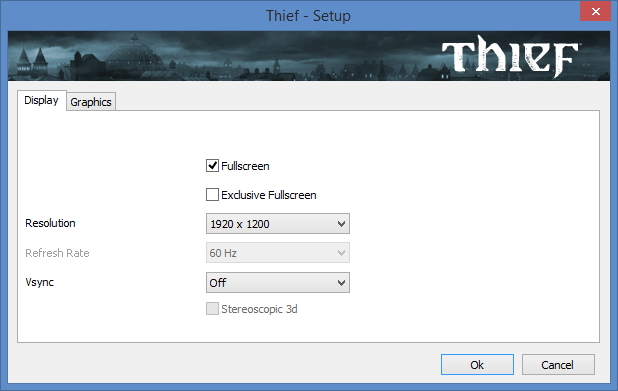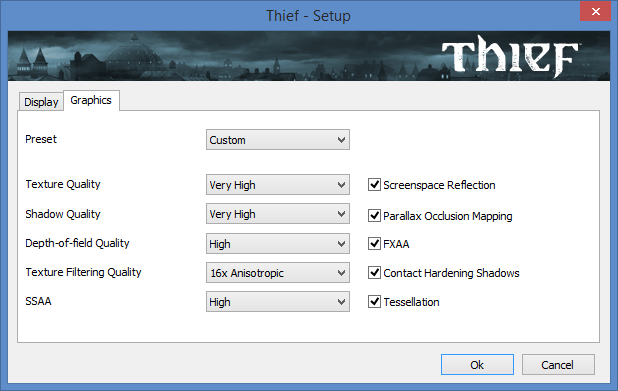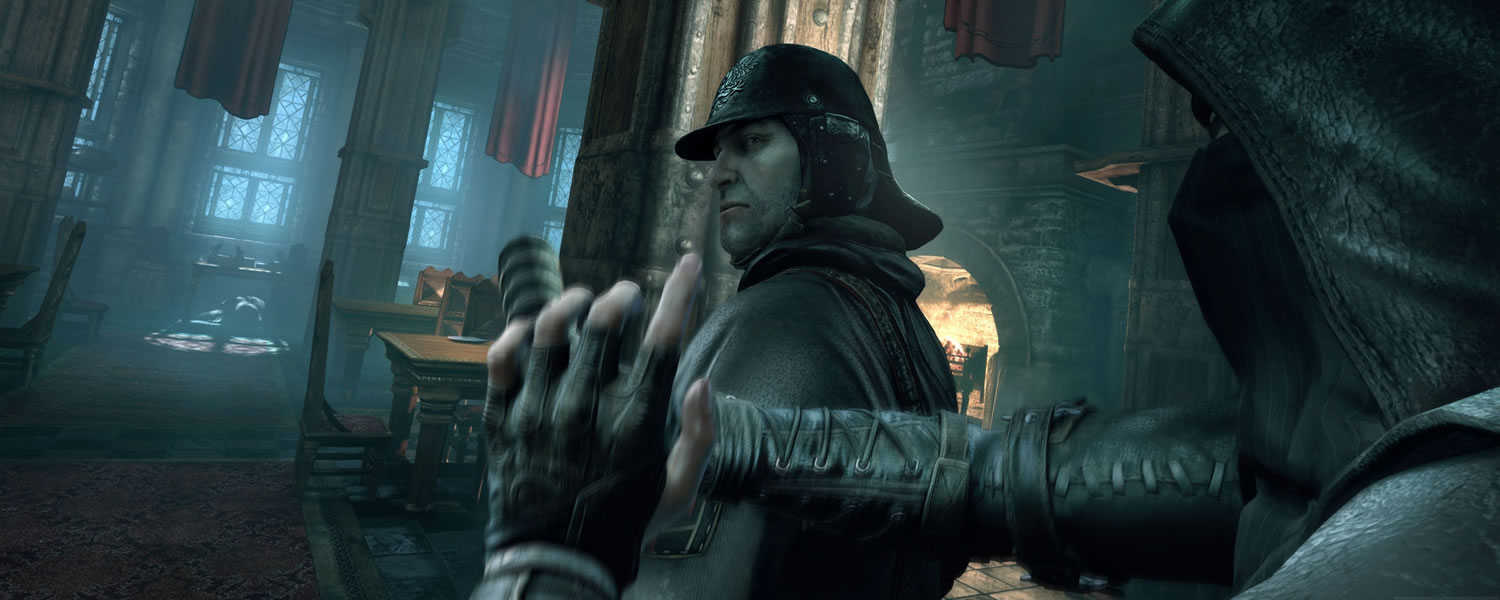Despite being built with the aging Unreal Engine 3, Thief touts some cutting edge rendering techniques that have put the game on our radar. Along with DirectX technologies such as Phong Tessellation and Bokeh Depth of Field, Eidos' latest stealth entry supports Contact Hardening Shadows, which makes shadows more realistic by sharpening shadows on closer objects while blurring those in the distance.
The developer also mentions the inclusion of Parallax Occlusion Mapping (POM) – an enhancement of the parallax mapping technique, which in turn is an enhancement of Bump Mapping, something I first recall seeing heavily used in Doom 3 where it brought textures to life. POM gives flat textures 3D definition by using a displacement map to make the textures change relative to perspective.
POM is typically used on flat ground surfaces like concrete roads since the silhouette doesn't change. The resulting textures feature self-occlusion and self-shadowing in real time without sacrificing the processor cycles required to create an identical effect with geometry calculations. Having first appeared in the original Crysis back in 2007, the tech isn't new but it still requires high-end hardware.
We've also caught word of "Contact Hardening Screen-Space Reflection" (CHASSR) but we can't find any information about this feature. For whatever it's worth, Crysis 3 features Screen-Space Reflections which provides surface reflections where you'd expect them, so we imagine that CHASSR works similarly except perhaps the closer a reflection is the sharper it looks while distant ones will be blurrier.
Support for AMD's Mantle API is also expected in a post-launch patch sometime next month, though we won't hold our breath though given Mantle was continually delayed in Battlefield 4 and buggy once added. Apart from the upcoming addition of Mantle, the PC version offers improvements over the PS4/Xbox One versions including better anti-aliasing, higher resolution shadows and support for multi-monitors.
Eidos also claims to have worked hard on multi-threading performance by adding a fully multi-threaded animation and cloth system, not to mention that the company has included a solid in-game benchmark, which seems increasingly rare among triple-A releases. Although we'd like to see what Mantle brings to the table in this release, there's plenty for us to explore until AMD's tech is implemented properly...
Testing Methodology
Thief's built-in benchmark appears to do a good job of demonstrating a worst-case performance scenario, so if your system can average 60fps in the benchmark you should enjoy perfectly smooth gameplay from start to finish. A key advantage of this is that you'll be able to more accurately compare your results with ours and for those wanting to upgrade this will give you a really clear picture of what's required.
For testing, we set the graphics preset to very high and then turned up anisotropic texture filtering from 8x to 16x for maximum quality. We also tested using the high quality preset which allowed us to test with some lower-end graphics cards. Both settings were run at 1680x1050, 1920x1200 and 2560x1600.
The AMD Catalyst 14.2 Beta and Nvidia GeForce 334.89 drivers were used. As far as I know, Nvidia has not mentioned Thief in its most recent driver releases and has likely yet to make any real optimizations. Keep in mind that this is an AMD-supported game so they should have an advantage for the moment.


Test System Specs
- Intel Core i7-4770K (3.50GHz)
- x2 4GB Crucial DDR3-2400 (CAS 11-13-13-28)
- Asrock Z87 Extreme9/ac (Intel Z87)
- OCZ ZX Series (1250W)
- Crucial m4 512GB (SATA 6Gb/s)
- Gigabyte GeForce GTX Titan (6144MB)
- Palit GeForce GTX 780 Ti (3072MB)
- Gainward GeForce GTX 780 (3072MB)
- Gainward GeForce GTX 770 (2048MB)
- Palit GeForce GTX 760 (2048MB)
- Gainward GeForce GTX 750 Ti (2048MB)
- Gainward GeForce GTX 680 (2048MB)
- Gigabyte GeForce GTX 670 (2048MB)
- Gigabyte GeForce GTX 660 Ti (2048MB)
- Gigabyte GeForce GTX 660 (2048MB)
- Gigabyte GeForce GTX 650 Ti (2048MB)
- Gigabyte GeForce GTX 580 (1536MB)
- Gigabyte GeForce GTX 560 Ti (1024MB)
- Gigabyte GeForce GTX 480 (1536MB)
- Gigabyte Radeon R9 290X (4096MB)
- Gigabyte Radeon R9 290 (4096MB)
- Gigabyte Radeon R9 280X (3072MB)
- HIS Radeon R9 270X (2048MB)
- Gigabyte Radeon R9 265 (2048MB)
- HIS Radeon HD 7970 GHz (3072MB)
- HIS Radeon HD 7970 (3072MB)
- HIS Radeon HD 7950 Boost (3072MB)
- HIS Radeon HD 7950 (3072MB)
- HIS Radeon HD 7870 (2048MB)
- HIS Radeon HD 7850 (2048MB)
- HIS Radeon HD 7770 (1024MB)
- HIS Radeon HD 6970 (2048MB)
- Microsoft Windows 8.1 Pro 64-bit
- Nvidia GeForce 334.89
- AMD Catalyst 14.2 Beta



